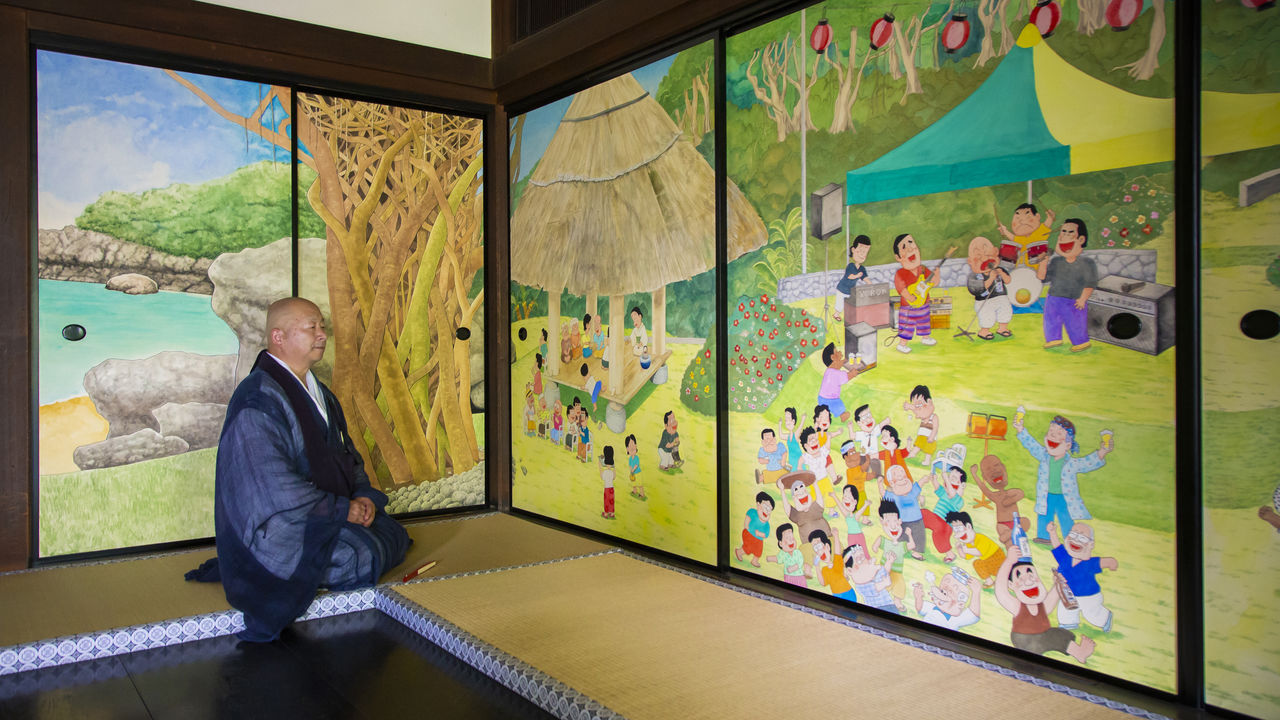
Daitokuji’s Head Priest Yamada Sōshō on the Shinjuan Sliding Door Painting Project
Guideto Japan
- English
- 日本語
- 简体字
- 繁體字
- Français
- Español
- العربية
- Русский
A Gift for Turning Work into Play
A breath of spring tells of the approach of planting time, and the winds of early summer warn of the need to put props in the fields against the coming of typhoon season. The sun slowly tanning the skin is the signal to start making Daitokuji nattō, the fermented soybeans that have been preserved using the same methods for over 500 years.
One big attraction of life in a Buddhist temple is living in harmony with nature while being prepared for the changes of the seasons. The vegetables hanging heavy in the fields will be harvested, and arrayed on temple tables, as the superior intends, without being troubled in the least by pouring rain or typhoon winds. The superior’s annual work plan, sensible and efficient, crystalizes the knowledge his predecessors have accumulated over Shinjuan’s long history.
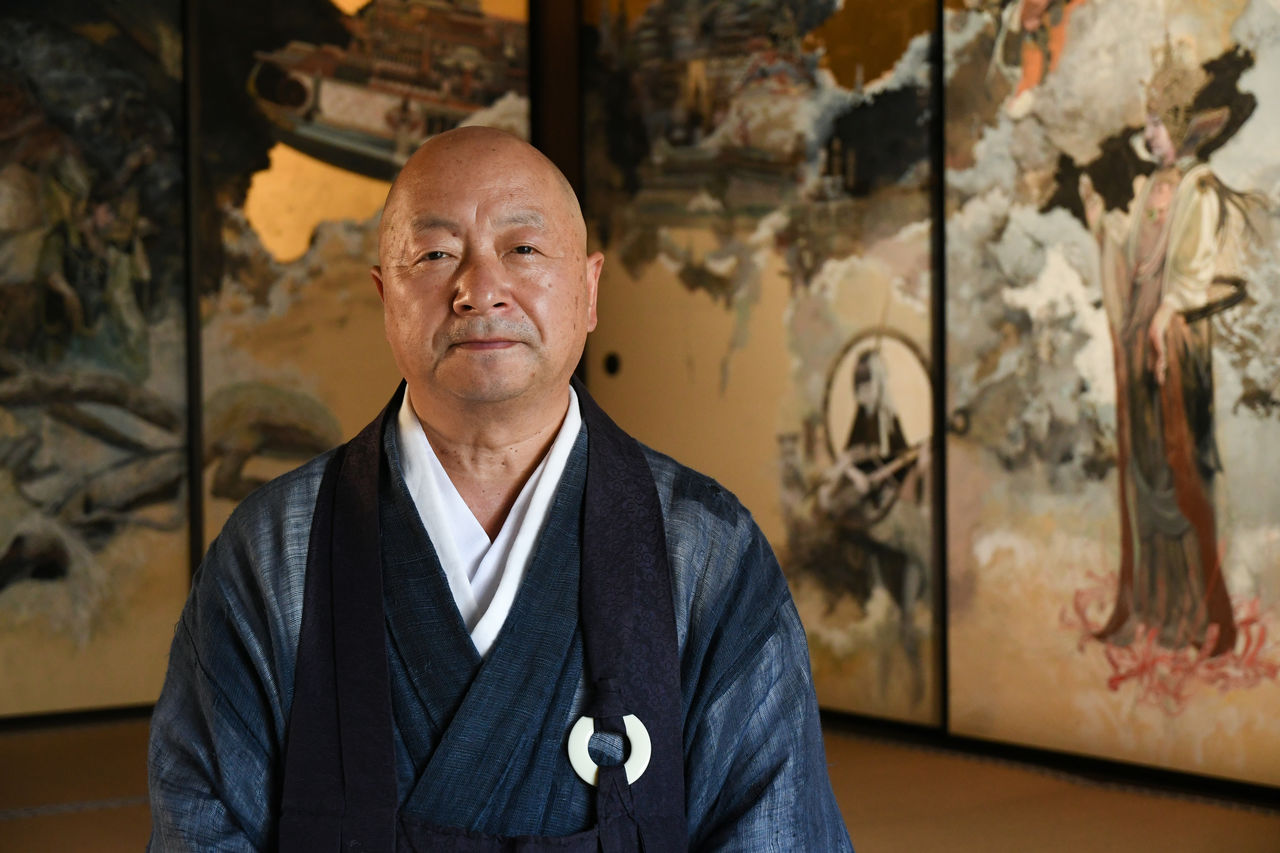 Yamada Sōshō, the twenty-seventh superior of Shinjuan, seated before the fusuma illustration by Kamikokuryō Isamu, art director for the Final Fantasy video game series. (© Tsunoda Ryūichi)
Yamada Sōshō, the twenty-seventh superior of Shinjuan, seated before the fusuma illustration by Kamikokuryō Isamu, art director for the Final Fantasy video game series. (© Tsunoda Ryūichi)
From my perspective as an artist in residence, seeing the superior up close and personal on a daily basis, I would characterize his manner as that of making a profession of play. His seeming knack for turning any task into play is uncanny. Day-to-day tasks become something genuinely creative. Sweeping the yard and working in the fields become a kind of artwork, rendered anew each day on the canvas that is Shinjuan itself. This gift for turning even drudgery into imaginative play may be a sign of an inherent creativity.
“Cordwood can be art.”
The superior seemed to have perceived one day that I was getting tired of the menial task of stacking firewood. An utterance muttered in passing struck home, and strangely, I could now see the whole situation differently. When I looked up at the mound of cordwood I had stacked until sundown by trial and error, I felt a genuine sense of accomplishment.
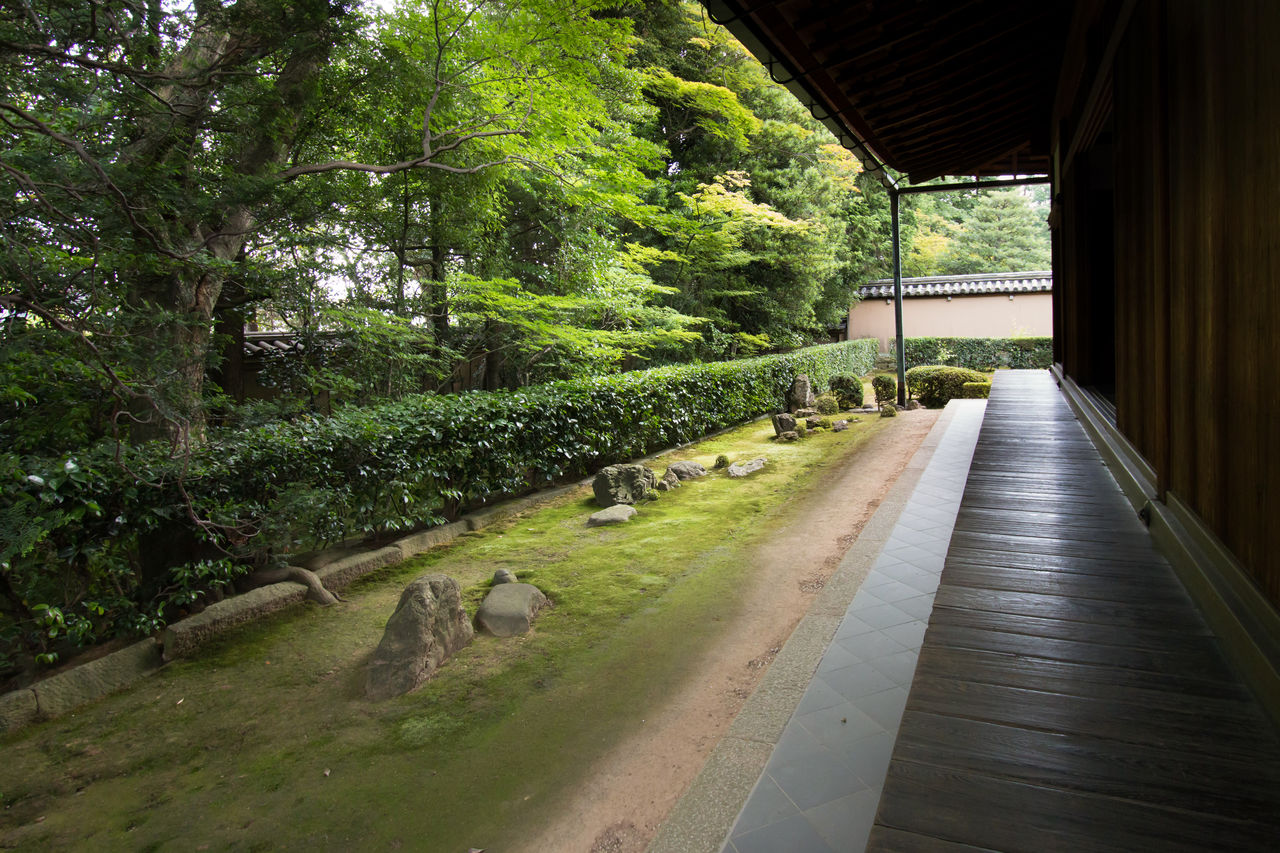 The Shichi-Go-San no Niwa (Children’s Garden), attributed to Japanese tea ceremony master and monk Murata Jukō (1423–1502), will be opened to the public along with the fusuma illustrations. (Photo courtesy of Kyoto Shunjū)
The Shichi-Go-San no Niwa (Children’s Garden), attributed to Japanese tea ceremony master and monk Murata Jukō (1423–1502), will be opened to the public along with the fusuma illustrations. (Photo courtesy of Kyoto Shunjū)
The “Seventh Artist”
The fusuma sliding doors in Shinjuan have seen considerable wear and tear over the centuries since they were first painted, and the time had come to replace the irreparably damaged ones and secure new art for places where paintings were missing. The superior says that at the outset of this project to involve the likes of manga artists, anime directors, and computer game art directors in illustrating his temple’s fusuma, he came in for no small amount of criticism, though. “Don’t make a mockery of this fine old temple,” he was told; “How dare you commit blasphemy against the Buddha.”
Preserving important cultural assets and transmitting them to posterity is an inescapable obligation for a storied, historic Buddhist temple. That which has form is destined to decay over time, though, however much care it receives. Many a temple superior, not just at Shinjuan, must grapple long and hard with the question of how to raise funds for restoration work. It is surely a humiliating exercise, petitioning government and the private-sector sources for grants, as well as going hat in hand for donations from temple patrons and worshippers. In transforming such exercises into a splashy event, as Shinjuan’s chief priest has done is the hallmark of a top-notch creator with the mind of a media producer.
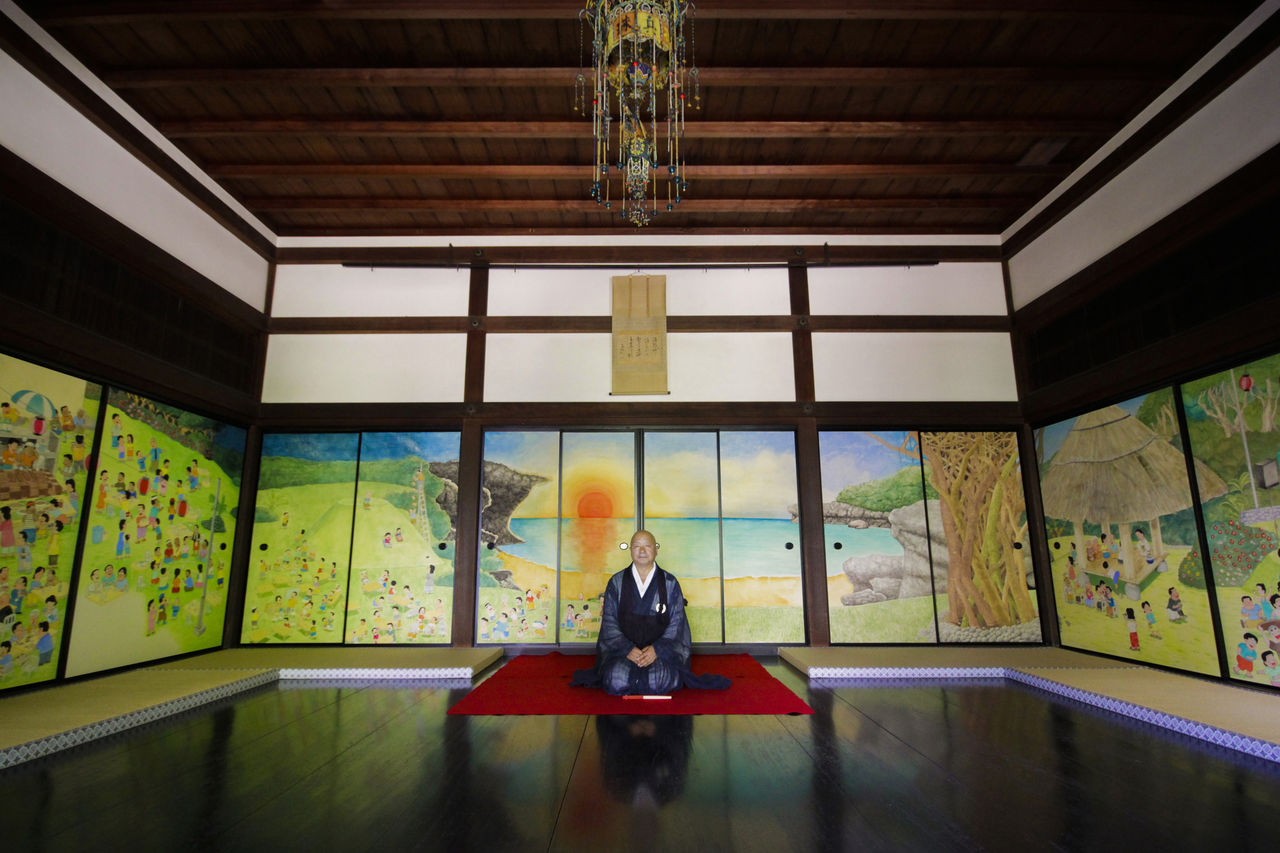 With the fusuma illustrations in Hōjō main hall by Kitami Ken’ichi, manga artist renowned for Tsuribaka nisshi (Fishing Fool’s Diary).
With the fusuma illustrations in Hōjō main hall by Kitami Ken’ichi, manga artist renowned for Tsuribaka nisshi (Fishing Fool’s Diary).
The notion behind the fusuma illustration project has been that if one is to take money from people in the name of restoring the temple’s art, then it is necessary to entice them to open their wallets joyfully—to give people with neither connection to nor interest in Zen or temples a reason to visit. To do that, Yamada had to find a way to completely transform a place viewed as stuffy, awkward, and imposing into something exciting, and even playful. While the project comes across as wildly unconventional, it all comes back to the idea of ensuring that the treasures Shinjuan has long preserved are bequeathed to future generations.
When I ask what Ikkyū-san would say about the project, the superior grins and replies that the celebrated monk would probably scold him—“If you’ve got time to fool around like this, then get back to work sweeping the yard”—though he would probably also be surprisingly pleased by the fusuma illustrations themselves.
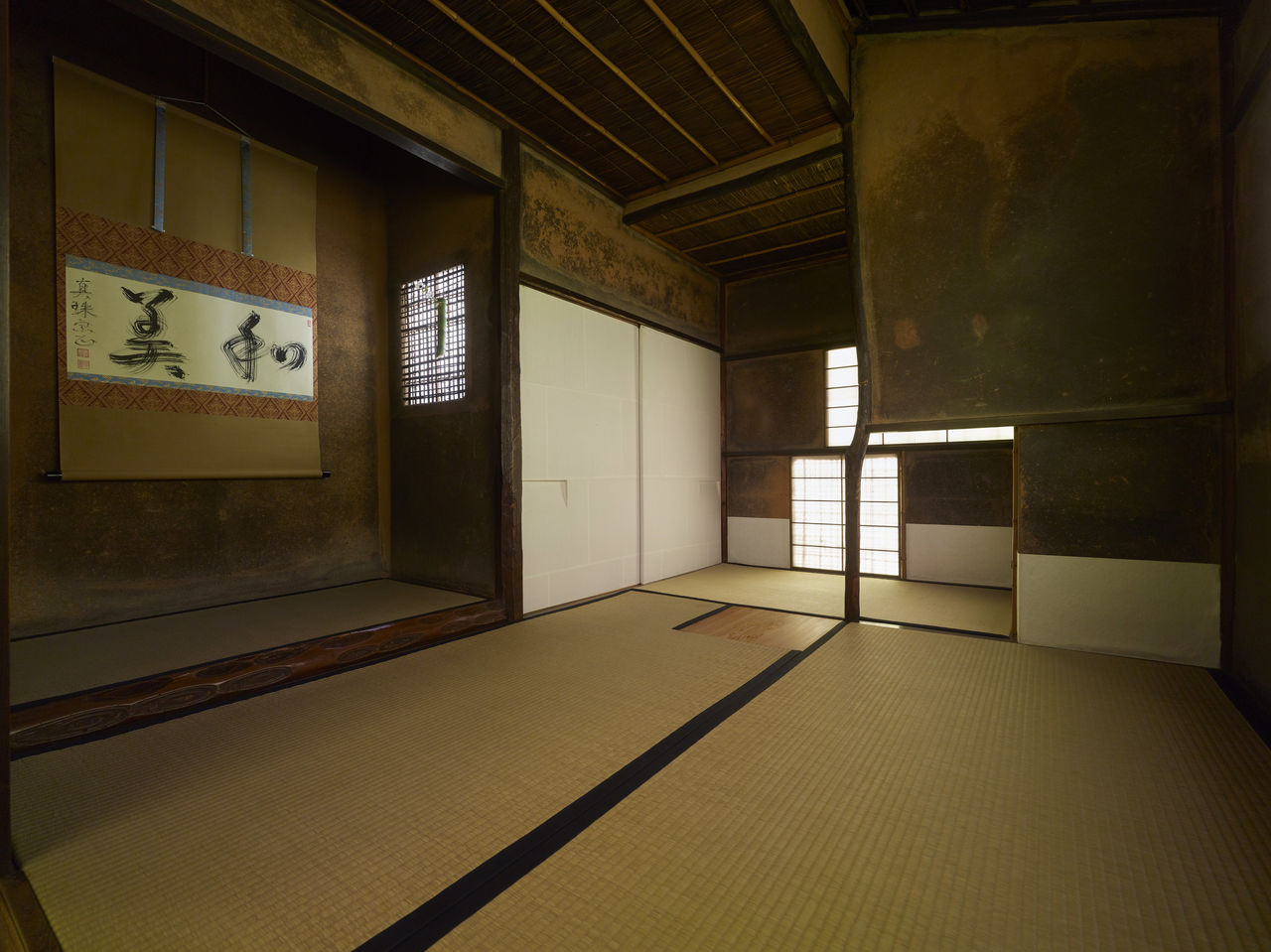 The Teigyokuken tearoom, normally closed to the public, will also be open to attendees. (Photo courtesy of Kyoto Shunjū)
The Teigyokuken tearoom, normally closed to the public, will also be open to attendees. (Photo courtesy of Kyoto Shunjū)
Once the fusuma illustrations are revealed to the general public, people who have never been inside Shinjuan will probably flock there in great numbers. Anime fans and computer game enthusiasts coming for the fusuma illustrations probably won’t be interested in the tearooms as well. The superior, however, as the “seventh artist” and the ultimate instigator of this project, is hardly going to just let them walk away, having gotten them to visit in the first place.
I wait eagerly to find out just what masterpiece Yamada, who has supervised the creations of these six contemporary artists, will ultimately create on the canvas that is Shinjuan.
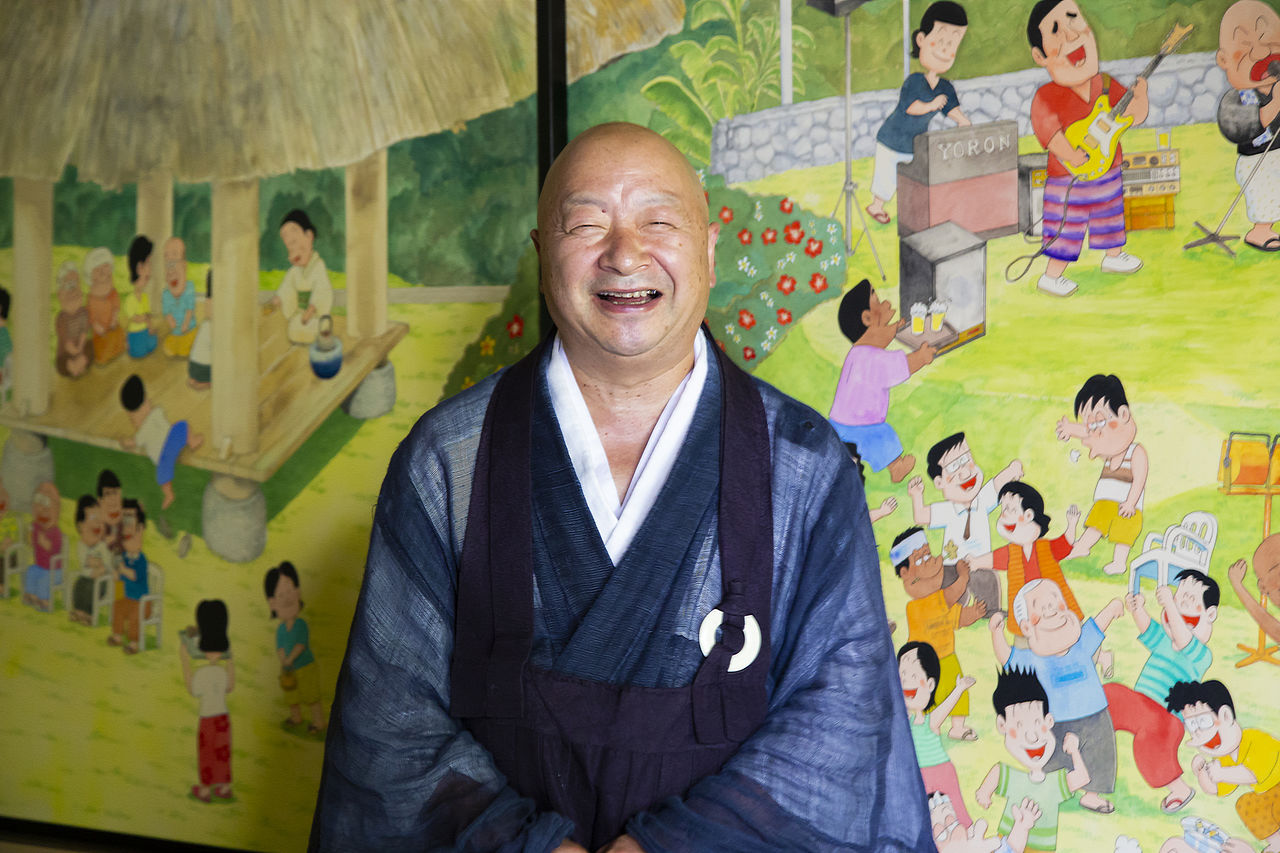 Yamada expresses his hope that the fusuma illustration project will inspire more people to visit the temple.
Yamada expresses his hope that the fusuma illustration project will inspire more people to visit the temple.
Related > New Art in an Old Setting: The Shinjuan Painting Project at Daitokuji, Kyoto
Daitokuji Shinjuan Special Viewing
- Dates: September 1 to December 16, 2018 (closed October 19–21)
- Hours: 9:30 am to 4:00 pm (last entry)
- Fee: Adults ¥1,200, junior high and high school students ¥600, ages 12 and under free (when accompanied by an adult). Note: preschool age children will not be admitted to the Tsūsen’in study or the Teigyokuken tea ceremony room.
- Access: from Kyoto station, take the Kyoto municipal subway Karasuma line to Kitaōji. Transfer there to Kyoto city bus routes 1, 101, 102, 204, 205 or 206 and get off at Daitokuji-mae. From there, 7 minutes on foot (total travel time about 35 minutes).
- Daitokuji Shinjuan special viewing website
- Crowdfunding website for Kyoto Shinjuan (Japanese language only)
(Originally published in Japanese. Photos courtesy of Kyoto Shunjū, Tsunoda Ryūichi, and Nippon.com. Banner photo: The superior views the fusuma illustration of Kitami showing himself belting out a song.)